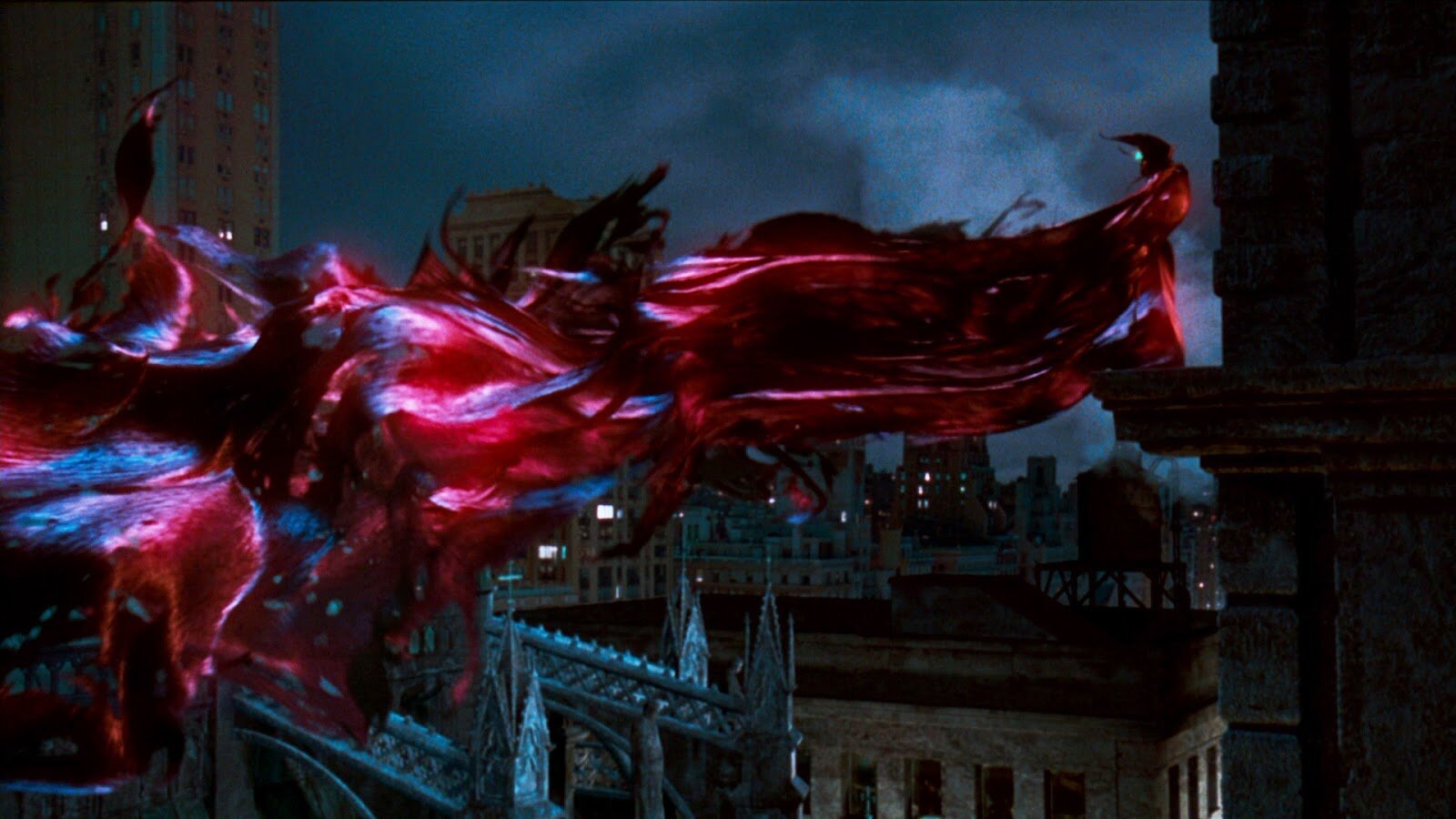Superheroes and Skyscrapers
Scene from King Kong (1933) after he scales the Empire State Building. Image © Radio Pictures.
It’s a common shot in superhero movies for the titular character to be shown on top of a building, looking out over the landscape and the city below. I first took notice of this trope on a recent flight while watching Venom (2018), and I began pondering just how common this shot is. I'll admit I'm not a big fan of superhero movies, but the moment intrigued me nonetheless. After some digging, I found quite a few examples. This type of shot usually occurs along the character arc at one of two different places. The first is right after said superhero fully harnesses his or her powers, and the second is a general establishing shot before or after a major plot point unfolds. In both instances, verticality is being used in order to establish the difference between a superhero and the people he or she is meant to protect. Let’s dig into what these moments mean to the characters and the viewer.
I began this post with a screenshot from the 1933 film King Kong, because I believe this trope can be connected back to this movie and its iconic climax scene of the monster scaling the Empire State Building. The fact that King Kong can scale a building that big is a superhuman act, and it reinforces the fact that he’s capable of things no human being is, much like a superhero. It makes clear the difference between him and us, and it uses verticality to do it. King Kong is no superhero, however, and the use of verticality here was most likely to enhance the danger and drama of the scene. Still, I believe superhero movies are in debt to this classic scene, which began the trope of scaling skyscrapers as a metaphor for power and accomplishment.
Scene from Venom (2018) from atop the Transamerica Pyramid in San Francisco. Image © Sony Pictures.
Scene from Spawn (1997) on a perch above the city after coming into his own. Image © New Line Cinema.
When these shots are used directly after the character fully harnesses his or her powers, verticality is a metaphor for the journey accomplished. The task is complete and the character has conquered gravity by scaling a tall building; he or she now exists on a higher plane, above the rest of us. It represents the transition from human to superhuman, and modern superheroes can be seen as gods in this way. In fact, we can trace this idea all the way back to the Greek gods of ancient times, who lived atop Mount Olympus; ascending the mountain was seen as a transition from the human world to the gods' world. Verticality is thus an indication of power and status, and the Venom and Spawn examples are in this group. A notable non-superhero example of this is in the movie Rocky (1976) at the end of the iconic training montage. He ascends the staircase of the Philadelphia Museum of Art and raises his arms in triumph, as he's just realized his full potential through his training camp.
Scene from The Dark Knight (2008) with Batman atop the Sears Tower in Chicago (posing as Gotham City). Image © Warner Bros Pictures.
Scene from The Spirit (2008) high atop the city, looking down upon his 'kingdom'. Image © Lionsgate.
The second group of these shots is a general establishing shot before or after a major plot point, like the above shots from The Dark Knight (2008) and The Spirit (2008). In the former, Batman has already harnessed his superhero status, but here the height is used as a metaphor for his protective status over the city of Gotham (or Chicago, as he’s atop the Sears Tower). He exists above the city and is like a god watching over his kingdom, protecting humanity below. Protection is a major theme among superhero story-lines, and a sky-high perch perfectly encapsulates this. The residents of the city below look up to their protector for hope, much as they would look up to a deity.
Elsewhere, outside of the actual movie or character arc, marketing materials commonly show this type of shot as well, like the following Hellboy (2019) and Teenage Mutant Ninja Turtles (2014) examples show. The same logic applies, however. The use of verticality serves to show the power and abilities of the character, and the protective nature of their role in the story.
Marketing image for Hellboy (2019) showing him at a sky-high vantage point looking over some type of destruction below. Image © Lionsgate.
Marketing image for Teenage Mutant Ninja Turtles (2014) of Michelangelo atop a building in Times Square, New York City. Image © Paramount Pictures.
Ever since ancient times, gods and mythical figures have resided in high places, ruling from on-high and looking down on their kingdom below. Verticality is alive and well here, and height has been used as a symbol of power and status throughout human history. Modern superhero movies follow this tradition closely, which is why these shots are so common among them. These modern-day gods protect their cities from the forces of evil, and serve as beacons of hope for those who they watch over.







